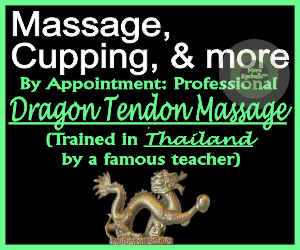
What has recently become clear is that some registered massage therapists are being subjected to sexual harassment at work by their clients. This violence can go both ways, of course, as suggested in our 2020 study on the problem published in The Canadian Journal of Human Sexuality. But it seems equally clear that clients are sexually harassing their massage therapists — possibly far more frequently than the reverse. Just this month, over a dozen women filed lawsuits against Houston Texans quarterback Deshaun Watson, alleging that he exposed himself during various massage therapy or related appointments. Some women claim he assaulted them or forced them to commit sexual acts.
The sudden explosion of headlines has shown a spotlight on a very real problem for a misunderstood and stigmatized industry.
Watson denies the accusations, with his lawyer claiming they are merely a bid for attention. "I believe that any allegation that Deshaun forced a woman to commit a sexual act is completely false," attorney Rusty Hardin said.
But the sudden explosion of headlines has shown a spotlight on a real problem for a misunderstood and stigmatized industry. Historical connections between massage and sex work have created harmful stereotypes and misconceptions about the services that massage therapists provide.
When the solicitation of sex became prohibited in the United States, brothels were sometimes disguised as massage parlors. This sexualization of the careers of massage therapists persists today in mainstream pornography, where “massage” continues to be one of the top searched terms on popular porn websites. Even television shows like 2012’s “The Client List,” a show that glamorized an unrealistic depiction of a professional massage parlor offering sexual services to clients, can reinforce pervasive stereotypes that threaten the legitimacy of registered massage therapists.
This prototypical massage therapist is viewed as being a woman — attractive, submissive and sensuous. Clients who endorse such stereotypes may incorrectly believe that their massage therapist will provide sexual services. And the massage therapy setting (private, dark, relaxed, involving partial nudity and intense touching) provides cues that we associate with sexual intimacy.
Massage therapists have had to fight to dispel these myths and establish the professionalism of their field. Massage therapists complete an accredited massage therapy program involving up to 1,000 hours (depending on the program) of in-class instruction and practical training. To become registered, massage therapists must pass a licensing exam and apply for a state license. Some massage therapists specialize in a certain area of massage therapy by completing a certification involving clinical hours in that area and passing an examination. Registered massage therapists strive to create and maintain professional boundaries with their clients and are trained how to instruct clients to disrobe and properly drape clients before and during the massage, while ensuring all physical contact is of a therapeutic nature.
Related
But problems persist. In collaboration with a professional association for massage therapists, my colleagues and I surveyed registered massage therapists to ask them about experiences of sexual harassment by clients. The goal of the study wasn’t to definitively quantify how many massage therapists have been sexually harassed by clients, but rather to investigate and gain some insights into therapists’ experiences of harassment.
Out of the 143 massage therapists surveyed, 107 reported being subjected to sexual harassment by a client. Most of these clients were identified by massage therapists as men and were just as likely to be first-time clients as they were to be repeat clients. These incidents primarily involved verbal harassment, such as requesting a sexual act from the massage therapist or making inappropriate comments about the massage therapist’s appearance. This is similar to what the lawsuits allege Deshaun Watson did in Texas. According to our survey, clients often made these violating remarks during the massage session. Outside of the treatment room, some clients called massage clinics to request sexual favors while others found and messaged these requests to their massage therapist on social media.
Physical acts of sexual harassment were reported in some cases, such as the client exposing their genitals to their massage therapist or trying to grab and kiss the therapist (also an accusation leveled against Watson).
Related
There were no reports of being forced to engage in more intimate sexual acts. But one massage therapist reported that a client waited in the clinic parking lot until the therapist had finished work so that they could ask if the therapist wanted to “finish at their place?” Another reported that a client had followed them home after the therapist has said no to going on a date. Others reported having money thrown in their face after refusing to perform a sexual act.
Interestingly, most incidents occurred in clinics with multiple registered massage therapists as opposed to a solo practice. In response to sexual harassment, most massage therapists demanded payment and discharged the client, although a significant proportion did not discharge the client (35 percent). Those who did not discharge the client said that they felt the situation was too ambiguous or that they did not know how to respond to the client’s actions because they were caught off guard. According to the lawyer representing Watson’s accusers, the quarterback’s actions left his massage therapists feeling “violated, disgusted and ashamed." Another woman, an aesthetician, reported feeling "confused and mortified."
Related
Our survey was a good first step, but future investigations in partnership with professional massage therapy associations can help shed further light on the prevalence of sexual harassment by clients.
Massage therapy colleges might consider implementing sexual education for professionals and sexual harassment training in coordination with local sexual prevention centers to better prepare massage therapists to respond to these incidents. As a starting point, massage clinics could post their zero-tolerance policies for sexual harassment in their reception areas and treatment rooms. However, the responsibility to prevent these acts of sexual violence should not be on the massage therapists. It is the clients who must be held responsible for their actions.
Morgan E. Richard
Morgan E. Richard is a doctoral student in experimental psychology at the University of New Brunswick, Canada.




































































































